For most, “lifting weights” is a very literal pastime. Sure, goals may differ between a recreational gymgoer who strength trains to benefit their health and a career powerlifter chasing an ever-higher total, but the general idea is the same: Get the weight from “A” to “B”.
For bodybuilders, it’s a bit different. Resistance training isn’t an end unto itself — it’s the means by which the physique athlete carves him or herself out of the proverbial stone. A bodybuilder’s workout plan is meticulously crafted and carried out with a certain hypnotic zealotry.
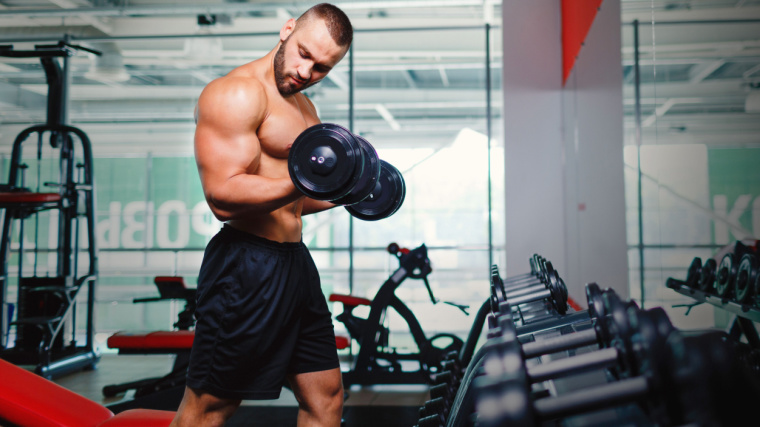
Ask any bodybuilder what separates a decent workout from an exceptional one, and most will dive into a rambling about how the workout made them feel. The euphoria they experienced as their muscles twist and knot and shred and split under the skin.
That feeling is the mind-muscle connection at work. It’s how you connect the dumbbell in your hands to your chest, or your lats, or your shoulders. The mind-muscle connection rides the line between mysticism and material; here are nine science-based tips to help you get in touch with your body in the weight room.
Mind-Muscle Connection Tips
- Perform Extra Warm-Up Sets
- Work With Cables
- Slow Down Your Tempo
- Adjust Your Technique
- Visualize
- Flex Between Sets
- Use the Mirror
- Hold the Stretch
- Change Your Angle
1. Perform Extra Warm-Up Sets
You’d be hard-pressed to find an accomplished bodybuilder who enters the gym and jumps right into their first set of squats. No matter what muscle you’re working, a proper warm-up is essential.
Warming up correctly not only prepares your tissues to bear the loads to come, but can attune your mind to the task at hand. Before things get heavy is also the best time to establish a proper mind-muscle connection.
Research shows that verbal instruction — that is, your workout partner or spotter cuing muscle activation — during warm-up sets can increase activity within the target muscle. (1) If you work out on your own, saying the name of the muscle or area you’re trying to target might help you engage it better.
Mind that this phenomenon appears to drop off past a certain intensity, as your central nervous system likely shifts its priority to helping you lift the weight in the first place. But when you’re starting your session, take an extra warm-up set or two and verbally cue yourself.
2. Work With Cables
The type of equipment you work with in the gym drastically impacts the sensation, and results, of your bodybuilding sessions. Physique enthusiasts spend a lot of time utilizing cable exercises, and it’s not because they’re scared of the barbell.
Cables offer something truly unique when it comes to hypertrophy: A workaround for gravity. Gravity applies force downward only, which affects the “resistance curve” of an exercise. If you’ve ever done a dumbbell flye for your chest, you know how this feels. The flye tears your pecs apart at the bottom, but is weightlessly easy at the top.
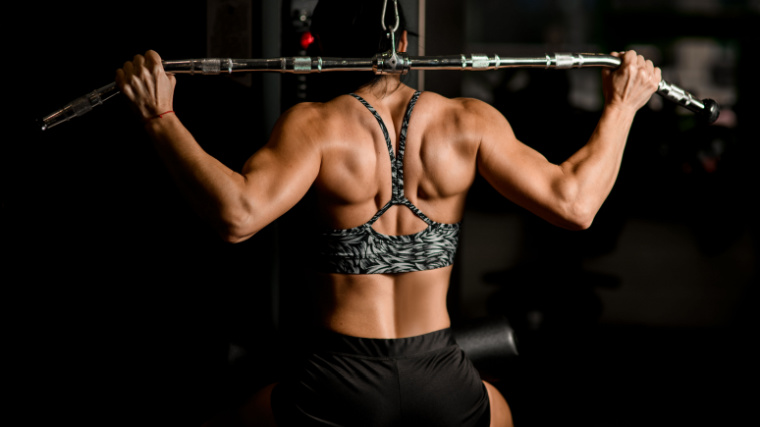
[Read More: The Ultimate 10-Week Powerbuilding Workout Routine for Mass and Strength]
This dampens your mental connection with the muscle you’re trying to work and reduces the amount of mechanical tension placed upon it as well. Cables are consistently challenging on your muscles from start to finish.
As such, you should work with cable exercises for bodybuilding on a regular basis. They shouldn’t necessarily make up your entire workout plan, but they’re phenomenally effective for getting a good mind-muscle connection going.
3. Slow Down Your Tempo
Exercise tempo refers to how quickly you move, or lower, a weight. Logically, it follows that you should try to lift a weight as quickly as possible. After all, that’s how you generate explosive power and train for maximal strength.
That idea mostly holds up to the concentric portion of bodybuilding exercises. But during the eccentric, or lowering, phase, you’ll generally find that the slower you lower the weight the more you’ll feel the muscle in question.
If you’re stuck in the habit of rushing through one-second eccentrics when you lift, make an active effort to slow down your eccentric tempo. Try to lower the weight for a full three seconds before beginning your next repetition.
4. Adjust Your Technique
It’s obvious, but it bears repeating: Your technique will greatly impact the amount of mental connection you feel during a given exercise. If you’re struggling to establish a good mind-muscle connection, it’s possible that your form is simply off.
For instance, it’s a common misconception that your knees shouldn’t travel ahead of your toes when you squat. Not only is it perfectly safe to do, but that forward knee travel will increase the amount of load placed upon your quadriceps as the knee moves further from your midline.
So, if you’re not feeling your legs when you squat, check your technique. The same goes for the bench press — if you don’t feel your pecs working but the bar doesn’t come down to your chest, strive to increase your range of motion first and foremost.
5. Visualize
Physical performers, from martial artists to figure skaters, close their eyes before they take action. Visualization is one of the most powerful tools in athletic or sport performance, but many bodybuilders overlook its potency.
The science here is crystal clear. Plenty of data indicate that mental visualization habits, sometimes called “attentional focus,” can impact both your connection with your own body and your real-world performance. (2)(3)
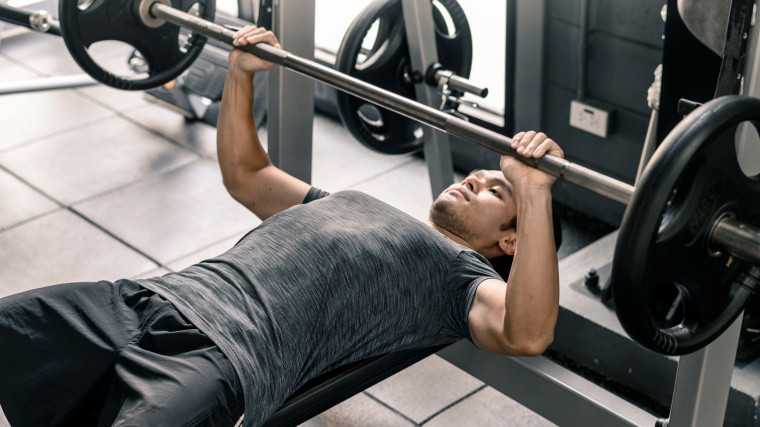
[Read More: 5 Bench Press Programs to Build a Bigger, Stronger Chest]
Some of the more compelling findings have even measured tangible increases in muscular thickness in participants who focused on visualization and internal cuing during their workouts. (3)
So, before your next set, take a moment to close your eyes and picture yourself performing it with picture-perfect technique. Conjure the feeling of your biceps contracting as hard as possible while you curl. Your next set should be all the better for it.
6. Flex Between Sets
If you’ve ever seen the seminal bodybuilding documentary Pumping Iron — and, if you consider yourself a bodybuilder, you’d better have — you’ll notice that the golden-era greats were hardly idle between their sets.
The G.O.A.T. himself, Arnold Schwarzenegger, rarely sat still between sets of his infamously effective workout routine. Flexing or practicing bodybuilding poses between sets was, and remains, a standard practice for physique competitors.
[Read More: The 15 Best Shoulder Exercises For Building Muscle]
Why? It kept their skills sharp when they stepped on stage. Posing is more challenging than it looks, so competitors need to practice regularly. Moreover, posing entails contracting a muscle as hard as possible. Which, when performed without any extra resistance, can really help you connect with that muscle.
If you’re comfortable with it in public (or work out in the privacy of your own home gym), hit a few bodybuilding poses between your sets, or actively flex the muscle you just finished working for 10 to 20 seconds. It should make a real difference when you go to hit your next set, and shouldn’t interfere with your recovery much.
7. Use the Mirror
Most gyms are lined wall-to-wall with mirrors for a reason. The mirror is a fantastic way to check your exercise form and make sure you’re doing things correctly, but it can also help you get a better mind-muscle connection going.
While it’s certainly poor gym etiquette to hog too much mirror space, especially if you’re blocking access to the dumbbell rack, you should generally look at your body while you’re lifting. Keeping an eye on the proverbial ball should help you maintain your focus and potentially even train with more intensity.
[Read More: Build a Titanic Torso with These Bodybuilding Chest & Back Workouts]
The next time you’re setting up for a set of incline dumbbell curls, turn the bench so it’s parallel to the mirror and watch your arm at work. You’d be surprised at how much it helps you feel your biceps.
8. Hold the Stretch
Loaded stretches are good for more than flexibility. In the field of exercise science, there’s a lot of momentum behind the idea of holding a stretched position against load being exceptionally potent for muscle growth. (4)(5)
The idea here is straightforward: Pause for a few seconds during an exercise at the point where the target muscle is fully lengthened. During Romanian deadlifts, this would be at the bottom of your hip hinge. On chest flyes, it’s when your arms are swept out to the sides.
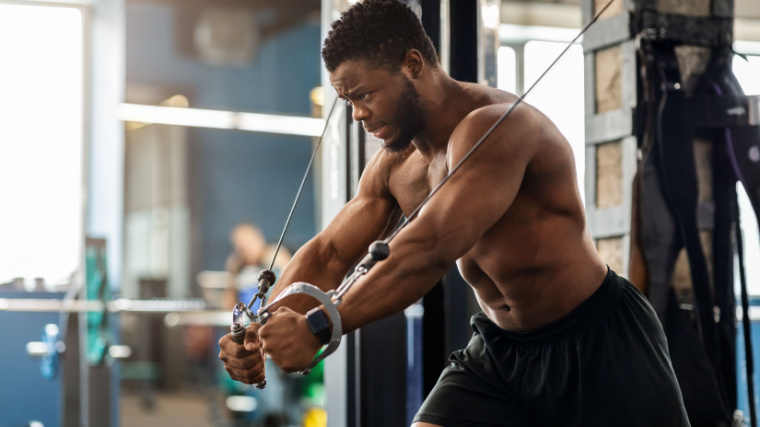
[Read More: Romanian Deadlift Vs. Deadlift — Which is Better for Your Program?]
Not only should this help enhance muscle growth to some extent, but the sensation of pulling your muscles apart (don’t worry, it’s perfectly safe if you use reasonable loads) will undeniably create a stronger mind-muscle connection as well.
9. Change Your Angle
Exercise angle refers to the literal posture of your joints when you’re performing a given exercise, like how inclined your torso is when you squat, or how much you tuck or flare your elbows while benching.
Your muscles are little more than a series of levers and pulleys that manipulate joint position. As such, changing the angle of an exercise can add to, or detract from, the amount of tension and sensation you place on a muscle.
This isn’t feasible to do on every single exercise, but you should experiment with slightly different angles on your exercises when possible to maximize your mind-muscle connection. An easy example would be to draw your forearms upward and inward across your body during the hammer curl to better engage your brachialis muscle.
Do You Need a Mind-Muscle Connection?
Some bodybuilders revere the mind-muscle connection more than others. Eight-time Mr. Olympia Sergio Oliva, for example, abided by a philosophy of “stimulate, don’t annihilate,” during his workouts.
On the other end of the spectrum, devotees of high-intensity training like Mike Mentzer and Dorian Yates cared much more about moving big weights and applying effort above all else, and both of those men had more than respectable careers in bodybuilding.
[Read More: The Best Full-Body Bodybuilding Workout for Beginner to Advanced Lifters]
On the scientific side, findings are mixed about whether or not the mind-muscle connection really improves performance. Some studies demonstrate that “attentional focus” may even dampen your performance if you fixate on it too much. (6)
A good mind-muscle connection is a tool, just like a weightlifting belt, or a pair of lifting straps. You need to utilize it appropriately if you want to maximize your performance and, consequently, grow the most muscle possible.
How Muscle Growth Works
The mind-muscle connection isn’t necessarily a component of muscle hypertrophy. You can think of it more as a bridge between your brain and your body — crossing it may help you perform better in the weight room and, consequently, improve your gains.
But hypertrophy itself is the byproduct of a pretty consistent formula. You need mechanical tension, muscle damage, and metabolic stress. (7)
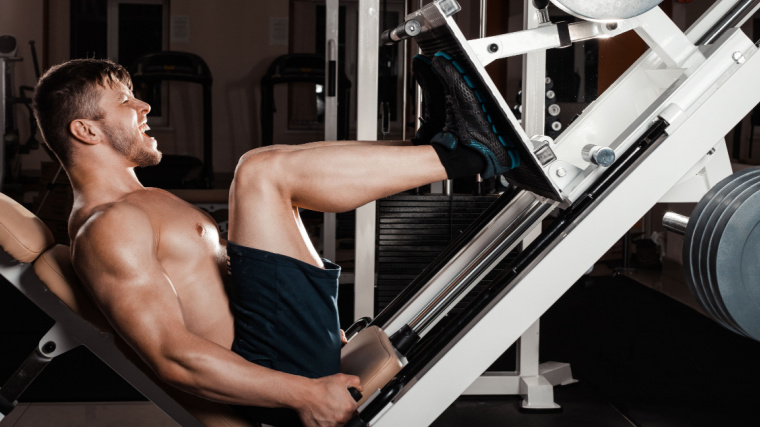
[Read More: Get Freakishly Strong With the 5×5 Workout Program]
Having a veritable Spider Sense of how your muscles feel during your workouts may help, but a good mind-muscle connection on its own won’t help you get big if you aren’t utilizing progressive overload and eating plenty of calories.
Your Takeaways
Some bodybuilders swear by the power of the mind-muscle connection when it comes to physique development. If you’ve been struggling with how your muscles feel during your bodybuilding workouts, some of these techniques might be of use.
- The mind-muscle connection refers to experiencing a physical sensation within a specific muscle while you’re performing an exercise.
- Some data has shown that improving your focus through better mind-muscle connection can improve your results, but these findings are conflicted.
- Certain tools are better for the mind-muscle connection than others. You may find it easiest during warm-up sets or single-joint isolation exercises.
- Don’t prioritize the mind-muscle connection at the expense of effort. Lifting heavy and with good form is what creates hypertrophy, not how much burn you feel.
More Bodybuilding Content
- Do Different Row Grips Matter for Muscle Growth?
- How to Do a Lat Spread Like a Pro Bodybuilder
- The Controversial History of the 1980 Mr. Olympia Bodybuilding Contest
References
- Snyder BJ, Fry WR. Effect of verbal instruction on muscle activity during the bench press exercise. J Strength Cond Res. 2012 Sep;26(9):2394-400. doi: 10.1519/JSC.0b013e31823f8d11. PMID: 22076100.
- (2013). Attentional focus and motor learning: A review of 15 years. International Review of Sport and Exercise Psychology. 6. 77-104. 10.1080/1750984X.2012.723728.
- Schoenfeld BJ, Vigotsky A, Contreras B, Golden S, Alto A, Larson R, Winkelman N, Paoli A. Differential effects of attentional focus strategies during long-term resistance training. Eur J Sport Sci. 2018 Jun;18(5):705-712. doi: 10.1080/17461391.2018.1447020. Epub 2018 Mar 13. PMID: 29533715.
- Pedrosa GF, Lima FV, Schoenfeld BJ, Lacerda LT, Simões MG, Pereira MR, Diniz RCR, Chagas MH. Partial range of motion training elicits favorable improvements in muscular adaptations when carried out at long muscle lengths. Eur J Sport Sci. 2022 Aug;22(8):1250-1260. doi: 10.1080/17461391.2021.1927199. Epub 2021 May 23. PMID: 33977835.
- Stasinaki A-N, Zaras N, Methenitis S, Tsitkanou S, Krase A, Kavvoura A, Terzis G. Triceps Brachii Muscle Strength and Architectural Adaptations with Resistance Training Exercises at Short or Long Fascicle Length. Journal of Functional Morphology and Kinesiology. 2018; 3(2):28.
- Calatayud J, Vinstrup J, Jakobsen MD, Sundstrup E, Colado JC, Andersen LL. Influence of different attentional focus on EMG amplitude and contraction duration during the bench press at different speeds. J Sports Sci. 2018 May;36(10):1162-1166.
- Schoenfeld BJ. The mechanisms of muscle hypertrophy and their application to resistance training. J Strength Cond Res. 2010 Oct;24(10):2857-72.
Featured Image: Alfa Photostudio / Shutterstock